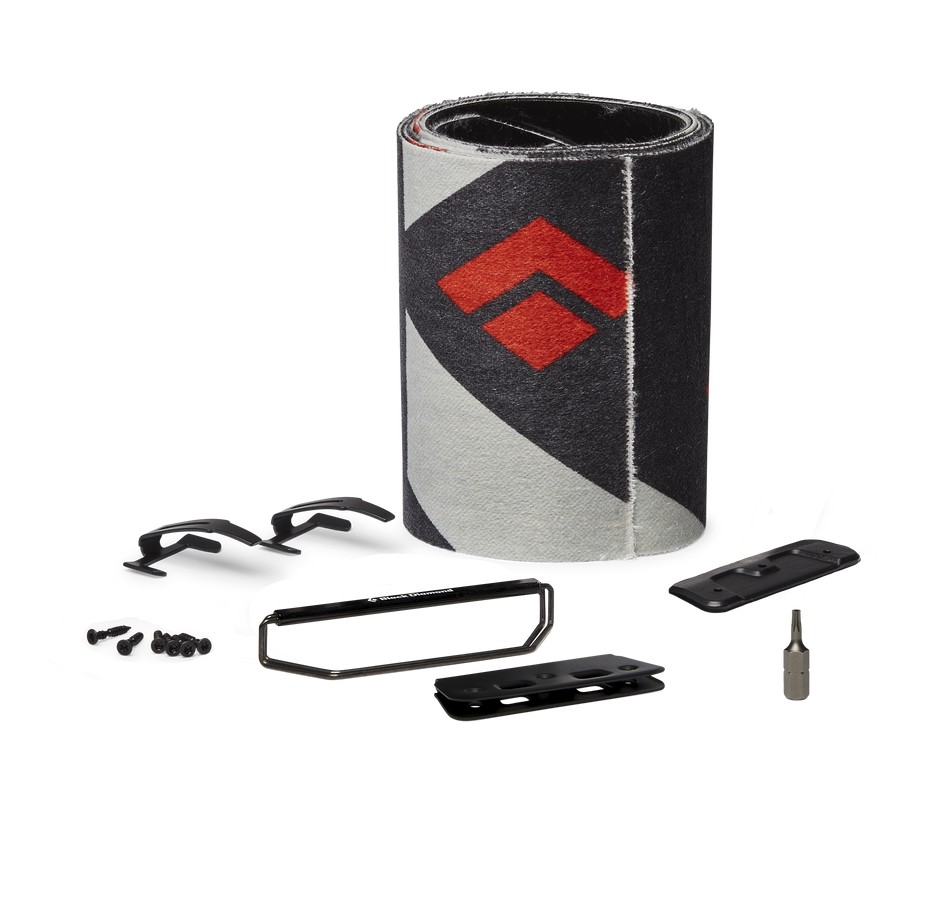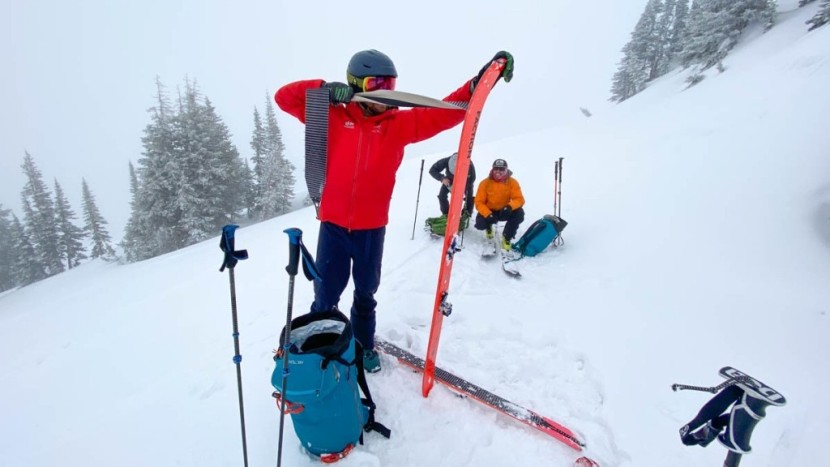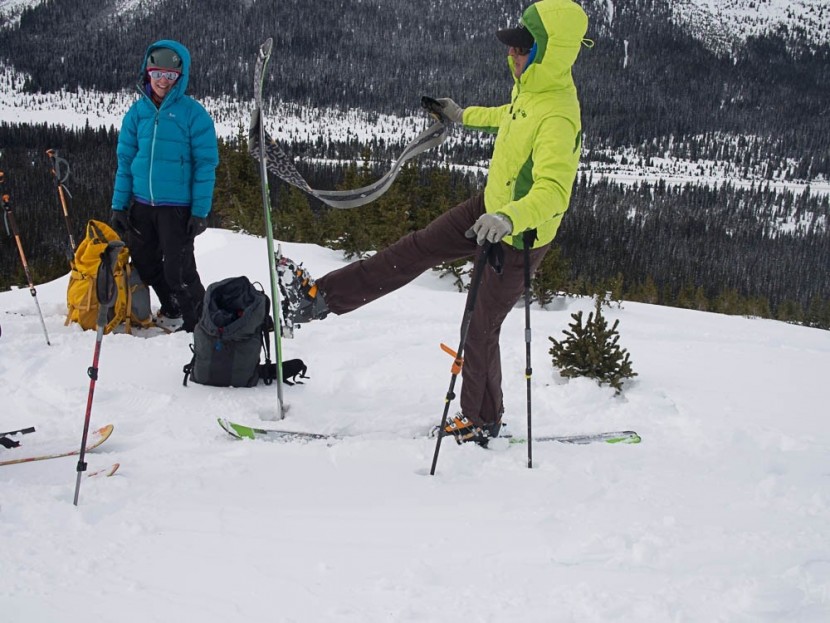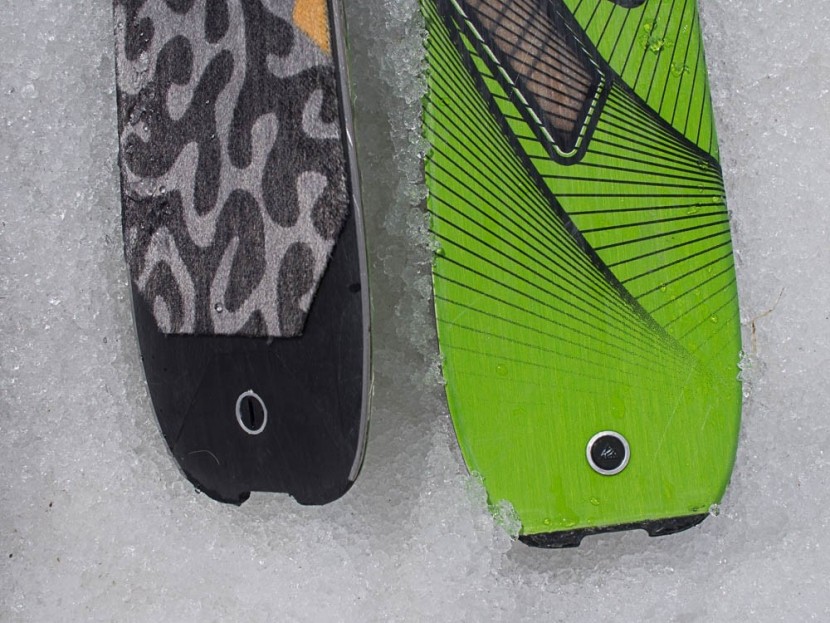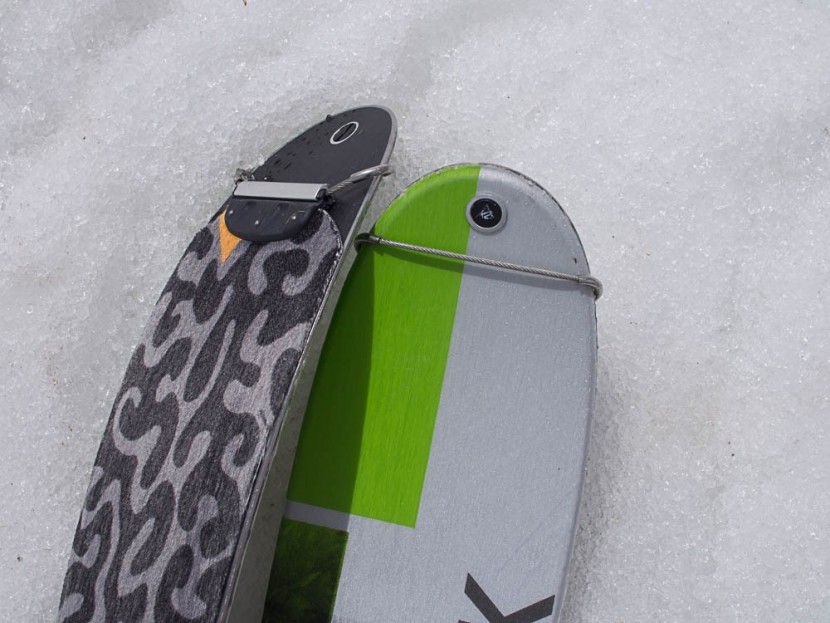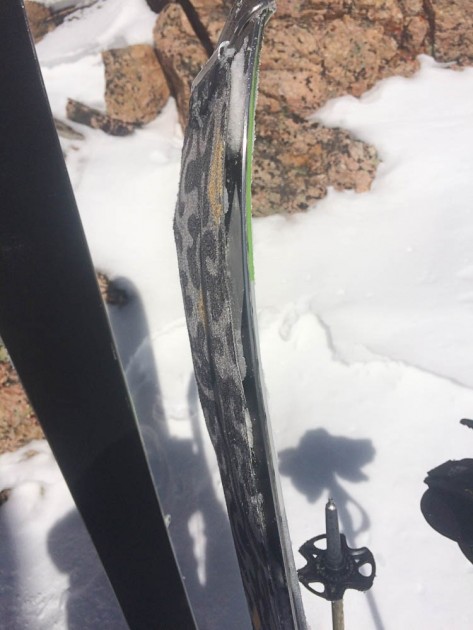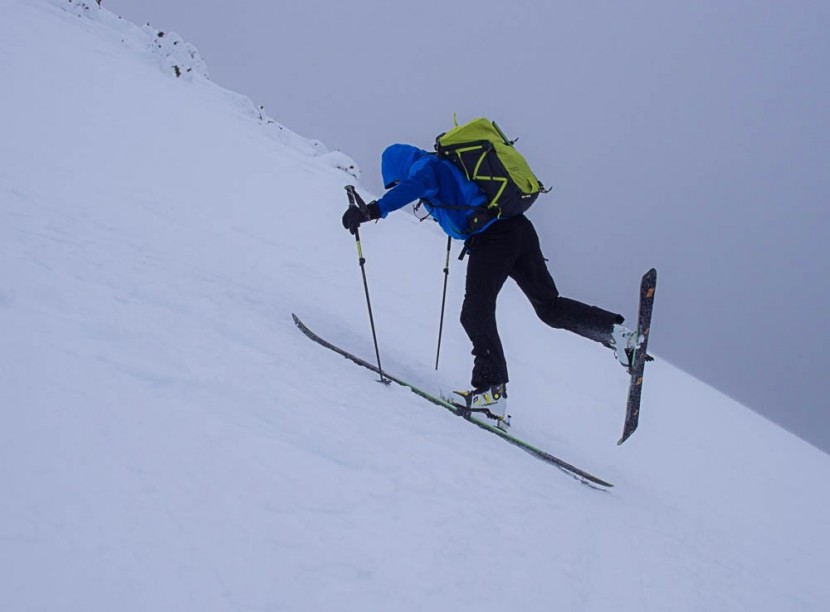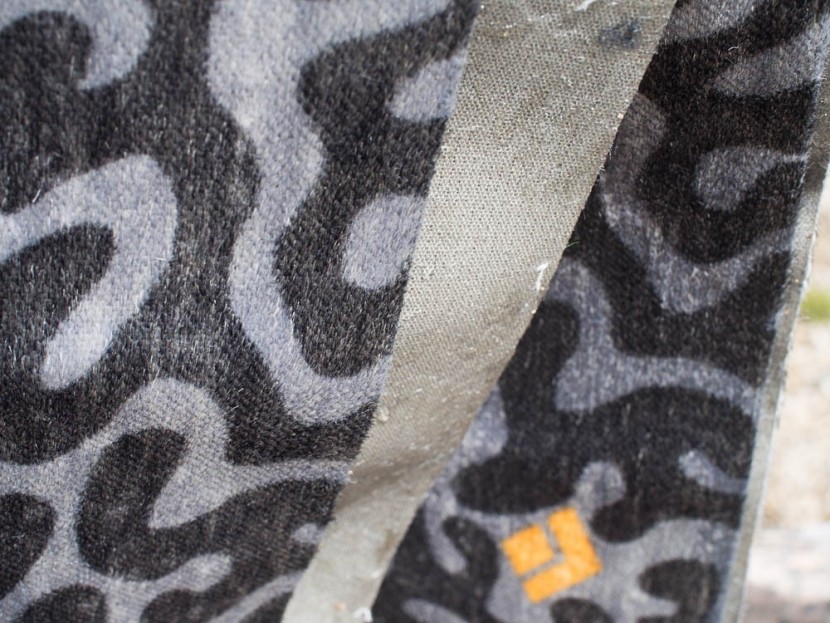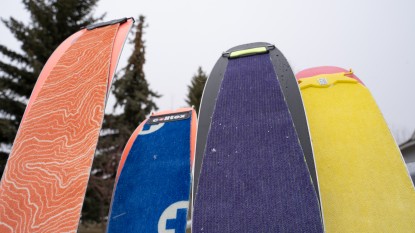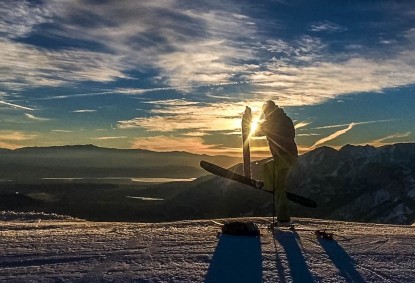Black Diamond Glidelite Mix STS Review
Our Verdict
Our Analysis and Test Results
The GlideLite Mix skins are a widely available, widely compatible product that strikes one balance after another in favor of acceptable performance. When we consider cost, others come very close, but the Black Diamond is near the top of the heap.
Performance Comparison
Glide
We want skins that glide well. At first glance, and to the uninitiated, this seems unimportant. The uphill portion of a backcountry ski day is simply plodding along slowly, and gliding is the last thing we envision. Sure, we often scoot down short hills on the way up without removing our skins, but the bulk of uphill travel is slow and cumbersome. Gliding isn't a word we'd use to describe the overall travel. Look more closely at truly efficient uphill travel, however, and you will see that each step taken by an accomplished skinner has a gliding portion. The best climbers all slide their skins ahead rather than lifting them. This slide is crucial to efficiency. We can't quite put our fingers on exactly why, but we know it to be true.
If glide is vital to each step, it is important to your whole climb. If it is important to the entire climb, it is essential to 80% of your backcountry ski day. On the other hand, we need skins that stay put on the ski, and that grip the snow well enough to keep forward progress rolling along, and that last through multiple seasons. Some attributes that contribute to good glide compromise in other ways. Gliding is indeed very important, but these top-scoring skins are not the best gliders. But the combination of nylon and mohair allows for the best balance of glide and grip, which is why we find them to be exceptional. Full mohair skins definitely glide better.
Portability
Making direct, quantitative comparisons of the weight of the skins we tested was difficult. Because each pair of skins is cut to a specific model (and size and dimensions) of ski, and because each skin has different tip and tail attachments, there is no easy direct comparison of actual weight. That being said, we could make some rough comparisons and generalizations. Once again, the Glidelite Mix skins come out in the middle. The blend of materials hedges its bets with the heavier nylon and lighter mohair to find a spot in the center of the spectrum. The material itself is perhaps a little heavier than average blended skins. Overall, when we account for different ski sizes and clip arrangements, the Glidelite Mix is about as packable as the other major blended products.
Glue Integrity
Black Diamond makes excellent, magical skin glue, and plasters it onto all of their skins. It sticks when you want it to (to your skis), and lets go when you need it to (in deployment when pulling skin from skin after storage and skin from after use). Among our tested Black Diamond skins, though, we found variation in actual glue integrity.
It turns out that, no matter how strong the glue is, the stiffness of the backing material matters. Supple skin material rolls and peels more readily than stiff material. This is true across the board, but is most apparent when comparing Black Diamond skins, as we can correct for tip attachment and for glue strength. All Black Diamond skins use the same tip fix and the same glue formulation. Nylon skins are stiffer, and Mohair is softer, with the blend - no surprise here - falling in the middle. The Glidelite Mix skins did not stay on quite as well as the full nylon. Overall, these skins stayed stuck well enough.
What would a review be without some nitpicking? In other rating categories like grip or glide, where the Glidelite Mix skins make clear compromises, we can forgive and justify these compromises in the interest of balancing performance attributes. With glue integrity, as it relates to the fabric stiffness, we see no reason the fabric couldn't be stiffer. Other skins in our review are just as light and packable, but stiffer and therefore stay stuck on skis better.
Further, other skins we used have tip attachments that do a better job of locking the material down to work with the glue and fabric stiffness to keep the skin from rolling. The latest rigid tip loop of the Black Diamond skins is an improvement over previous versions, but still isn't the most secure attachment when it comes to slowing the penetration of snow between ski and skin. In the end, the Glidelite Mix skins stayed on our skis well enough, but they could be better. We tested them some without the optional tail clip and had no significant problems in the rear. A perfect product, however, would do better regarding overall glue integrity.
Grip
The grip is why we use skins. Skis are slippery on their own; we need to add traction for uphill travel. That being said, as noted above, we also need the skis to glide forward. Grip and glide are, logically, at odds. The best gliding skins are not the best grippers and vice versa. With glide, more is better. With grip, we only need so much. We need our skis to grab the snow at an angle that suits the most efficient rate of ascent. The steepest track, even if our skins would stick, is inefficient on our legs. Tilting the angle back is better for the rest of our bodies.
We only need skins that stick to moderate slopes. The Mo-Mix skins, used with good technique, stick just fine in any terrain you will encounter in typical backcountry skiing. Sure, you can get better grabbers. Notably, the nylon choices offer truly enhanced grip. To climb the steepest terrain possible, in a straight, plumb line, choose full nylon.
Icing Resistance
We found nothing notable regarding icing resistance on the Glidelite Mix skins. All skins we have ever used ice up at least little in the right circumstances. This is no exception. While it would be nice if there were a product that fully resisted icing, it seems unlikely. Even bare ski bases can ice up when the snow is variable, switching between cold and dry and moist and warm. To achieve the traction necessary from skins, they need to be textured at least a little. Because of this inherent texture, they will always be even more vulnerable to icing than smooth, bare ski bases. There are tips and tricks to minimize skin icing, and mainly it involves waxing the skins.
Compatibility
Along with the other Black Diamond skins, the Glidelite Mix product is universally compatible. All Black Diamond skins are equal in this regard.
Should you buy the Black Diamond Glidelite Mix?
As a top scoring product, these are priced very well. One caveat worth mentioning is that the mohair component of skins wears out with usage. Full mohair skins show wear in just a couple of weeks of heavy use and start to suffer in performance after a heavy season or two. It is harder to assess wear on the mixed skins, but it is surely happening. Few folks tour often and hard enough to wear out skins, even pure mohair skins, faster than they wish to upgrade skis, but it does affect the value. Pure nylon skins will last longer than anything with any amount of mohair. Still, we think the performance advantages of the Glidelite Mix skins is worth a few extra dollars and the minor durability compromise. For absolute value, full nylon has to be a little better, but we aren't keen on the performance and portability compromises therein.
What Other Climbing Skins Should You Consider
In this subcategory, you should consider the Best Buy award-winning Pomoca Climb 2.0. These yellow competitors are pretty much better in every way. Not so much so that you should delay your visits to the backcountry to get them, but enough that, given the chance, buy the Pomocas. If you want maximum performance, confine your search to the Pomoca Climb Pro S Glide or Contour Hybrid Mix.


